Best budget bike helmets: Affordable, safe and comfortable options
The best budget bike helmets help keep you safe while also being cool, comfortable and affordable
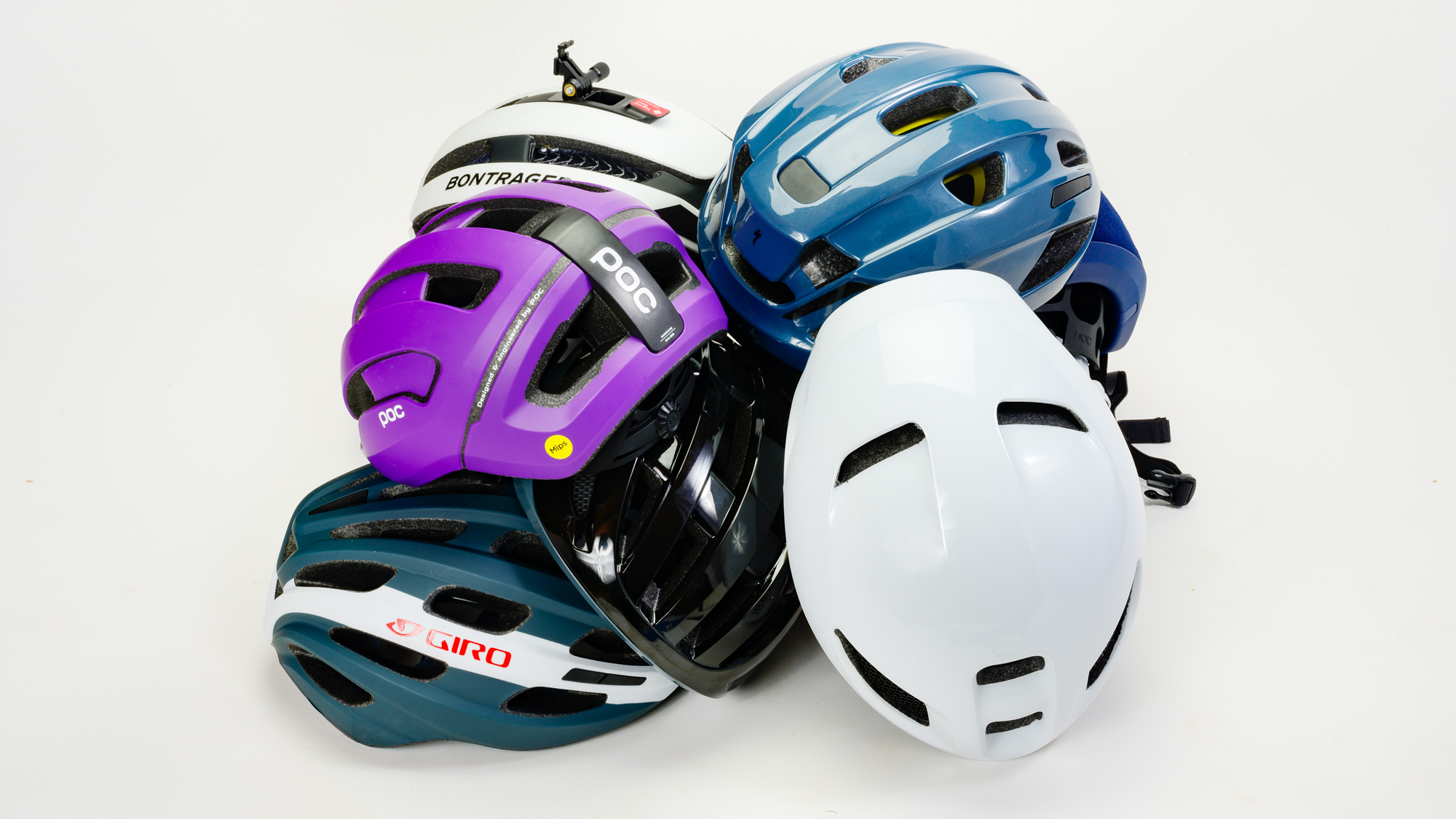
The best budget bike helmets offer many features of the best road bike helmets, and best aero bike helmets, but at more wallet-friendly prices. Those two guides have tons of options, but they can get very expensive.
If you are looking for the absolute lightest or fastest helmet, the price isn't going to be part of the decision. That's not the reality for most people though. Instead, the best budget bike helmets can make the cut even if they aren't the absolute best in terms of some performance metric.
What I haven't done, and you shouldn't either, is to cut corners on safety. Any helmet recommended here will have passed government-mandated test procedures. You have a guarantee of a minimum amount of safety. There's more to a great bike helmet though.
The best budget bike helmet is most likely to compromise in areas like weight or aerodynamics. That makes sense but you still want something that looks good and is comfortable to wear. You also want something that's going to last, as well as something that will match the type of riding you plan to do.
Just because your helmet wasn't expensive, that doesn't mean it should be unpleasant to wear. Keep reading to see my list of the best budget bike helmets.
Quick list
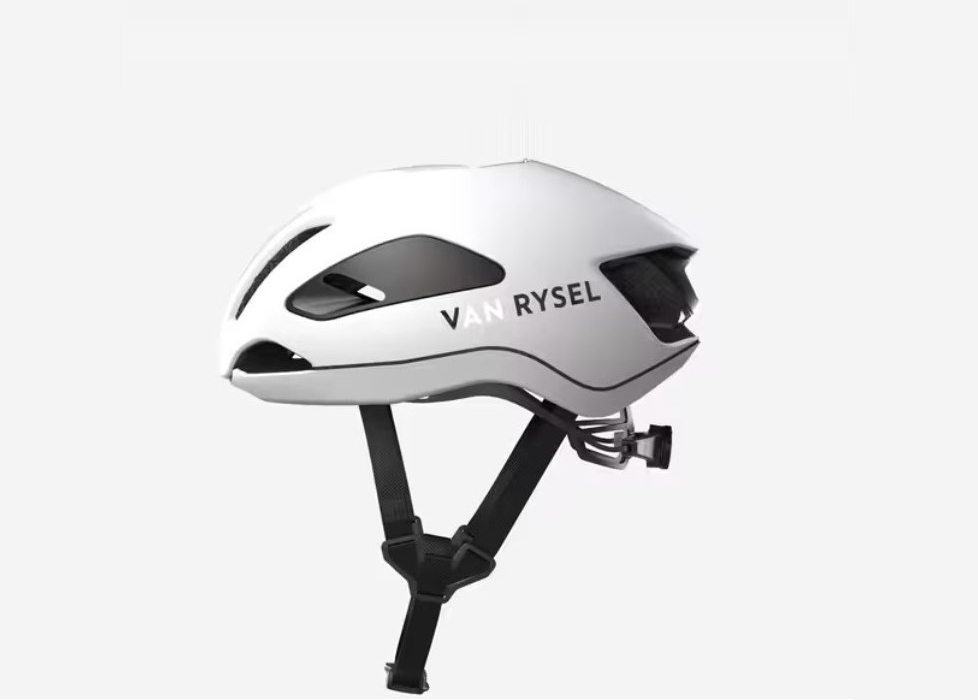
Best budget bike helmet for aero performance
There don't tend to be many budget aero helmets; aero optimisation requires research and investment and is consequently marketed at a higher price point. The Van Rysel FCR from Decathlon, however, is an exception and has managed to remain at a budget cost thanks to Decathlon's size and sales volume.
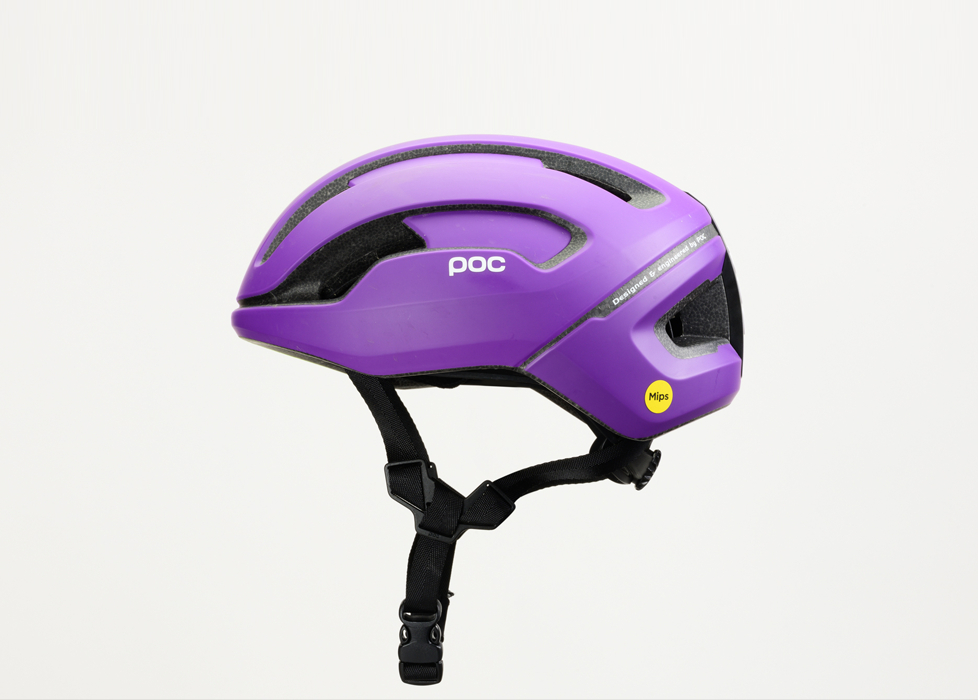
Best budget bike helmet for ventilation
Slightly more expensive than some of the others on this list, the POC Omne Air MIPS is a great choice for endurance or gravel riding, with big vents for an airy head, cool colour choices and good sizing options for comfort. It’s based on the POC Omne Ultra Mips, the helmet with cargo cord storage, but is slightly cheaper.

Best budget bike helmet for versatility
The best budget bike helmets are the ones that you’ll use for the greatest number of miles, and the Bontrager Circuit WaveCel will certainly offer you that. From commuting to long weekend rides, this is a comfortable, highly visible, and good-looking helmet that you’ll enjoy wearing.
Best budget bike helmets available today
Best overall

Specifications
Reasons to buy
Reasons to avoid
✅ You want low weight: Lazer's Kineticore impact protection system removes material from the helmet.
✅ You value extra airflow: The gaps from the Kineticore system help with ventilation.
❌ You want aero: The Tonic is a straightforward vented helmet without aero pretensions.
❌ You want pliable straps: The straps on the Lazer Tonic are quite think and stiff.
There's no definitive way to protect against traumatic brain injury. One thing that the industry has coalesced around though is the need to address off-centre impact. Initially, that meant a variety of strategies from different brands. At this point, much of that has disappeared as MIPS has gotten better.
Lazer decided to go in an entirely different direction and create a whole new concept called Kineticore. Instead of a slip plane system. Kineticore uses blocks of foam that will break and deform when impacted. Not only does Kineticore handle rotational impact but it also has the side benefit of making lots of channels for airflow above your head.
At this point, the Kineticore technology permeates the entire Lazer lineup. While there are plenty of options at different price points, the Lazer Tonic Kineticore is lower down and carries a budget price. You have to give up aero optimisation and you get thicker, stiffer, straps but you gain a lot at the same time.
The Lazer Tonic is actually one of the lightest options I tested at any price point. It's also a stylish helmet that matches a wide range of use cases. If you want to head out on a road bike you'll fit right in but if you jump over to a gravel bike, there's no need to swap helmets. There's even a cold weather kit to help in the winter.
Best for visibility from behind
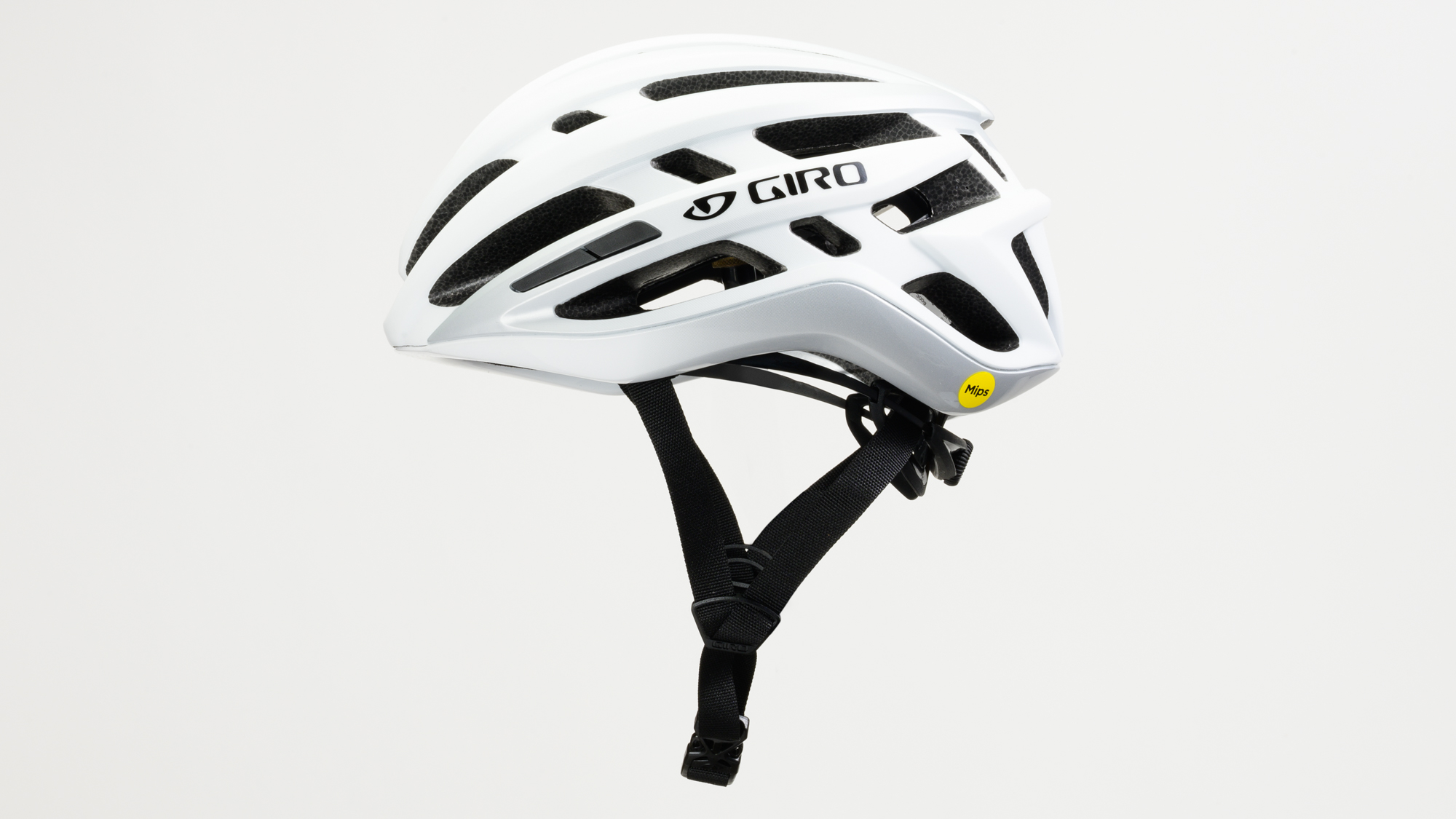
Specifications
Reasons to buy
Reasons to avoid
✅ You want increased visibility from behind: There are effective daylight reflectives and the option to add a blinky.
✅ You want low weight: The Agilis is low in weight for a budget helmet.
❌ You want lower profile MIPS: The Agilis uses an older MIPS implementation, but you'll probably pay more for something newer.
❌ You're looking for a test score: The Agilis hasn't visited Virginia Tech's lab.
There are a lot of great features about the Giro Agilis MIPS helmet. Right away, as with most Giro helmets, it's relatively light. Budget helmets don't tend to match the lightest helmets on the market but at only 293 grams for a size medium, it's on the lighter side. That lightweight scale reading is even with extended coverage in the rear.
There's also the MIPS liner which is both a positive and a negative. The only negative about it is that there are newer versions that completely do away with the plastic inner liner. On the upside though Giro is using a liner that's much lower profile than the original yellow liner most people associate with MIPS. It's not perfect but it's nice to see it there and it doesn't block airflow.
The real star though is the rear cradle. The design is the same as products like the Giro Eclipse aero helmet and that means it's compatible with the Roc Loc 5 LED light. It is an added cost but it's the most integrated rear light I know of on a road bike helmet. The Agilis also adds reflective paint that's effective even without a light.
Aside from the older MIPS liner, the only thing that I'd love to see changed is the lack of Virginia Tech testing scores. It always leaves a question when those are missing.
Best for commuting

3. POC Myelin
Specifications
Reasons to buy
Reasons to avoid
✅ You want a lower production footprint: The POC Myelin is made with 50 percent recycled materials.
✅ You want end-of-life recyclability: The Myelin is designed for recycling, not landfill.
❌ You want low weight: The Myelin is on the heavy side.
❌ You want MIPS: There's no rotational impact protection and no Virginia Tech test score.
The POC Myelin is a helmet unlike any that's ever been on the market in the past. From a style standpoint, it's a commuter helmet and it's unique even if you don't go farther than that. The outer shell uses a fabric covering and there's no adjustment to the rear cradle. The look would pair well with something from Chrome or Mission Workshop but there's a lot more to it beyond what you can see.
In fact, it's the true nature of the POC Myelin that shapes the looks rather than the other way around. What POC has done is create everything with the end of life in mind. That starts with using 50% recycled materials in construction. From there, the construction uses no glue. The outer fabric is there to prevent the use of laminated materials. There's no adjustment of the rear because the use of simple elastic adds simplicity to everyday use but also because it adds simplicity to break down the components again further down the line.
Unfortunately, there are also some concessions to sustainability you will have to deal with. MIPS doesn't make a system that's easy to break down and as a result, rotational impact protection didn't get included. Along with those issues, there's also no Virginia Tech score to objectively rate the crash protection and my ears come into contact with the bottom of the helmet. If sustainability is a buying consideration for you though, I suspect you want to know this is an option available. Even with the drawbacks, it's unique, sustainable, and comfortable.
Best for versatility
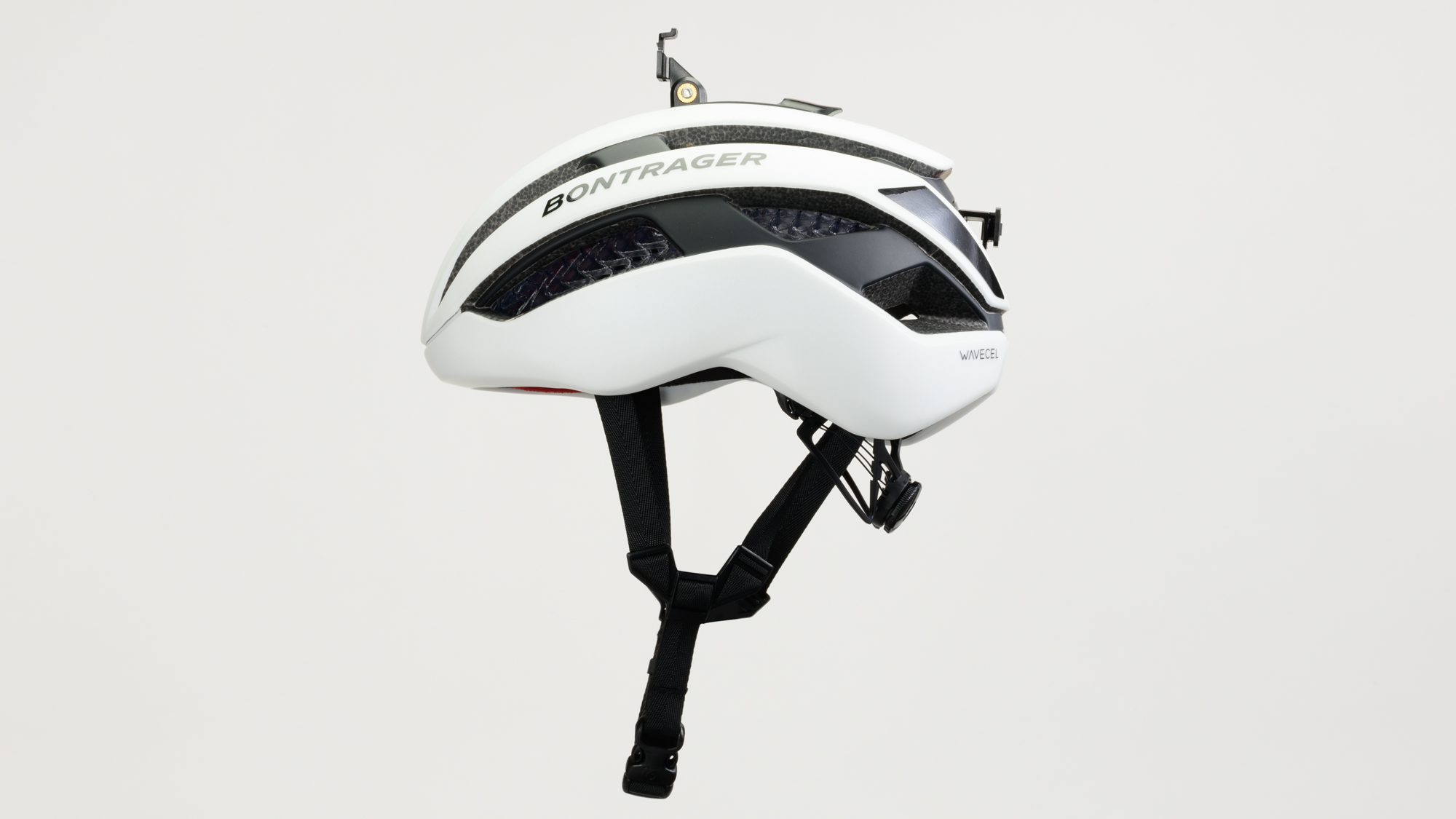
Specifications
Reasons to buy
Reasons to avoid
✅ You want one helmet for commutes and leisure: The clip-on lights are easy to remove when not needed.
✅ You often ride at night: Clip on the front light and you have a spot to augment an on-bike main light.
❌ You have a hot head: The Wavecel material cuts ventilation somewhat.
❌ You have an itchy head: Wavecel also prevents you scratching your head through the vents.
One way to approach the idea of budget is to look for a helmet that's highly versatile. If you commute by bike during the week and then go for longer rides on the weekend, it can be difficult to find the right helmet for both situations. A lot of people solve the problem by having more than one helmet. Bontrager has another idea though.
The Bontrager Circuit WaveCel helmet already lends itself to different types of bikes and different kinds of riding. It's got a profile that stylistically matches a weekday commute just fine. On those rides, snap the magnetic light mounts on and add some lights and you've got a great option for staying visible through the city. After you get home, pop the lights off and you are ready to head to a weeknight race on the fast bike. The Circuit will look just as good attacking off the front of a pack as it will paired with a backpack heading to work. If you end up extending a recreational ride past sundown, nothing says you can't use the lights in that situation also. That kind of versatility adds a lot of value.
When it comes to the downsides of the Circuit, it centres around the WaveCel rotational impact system. Unlike Kineticore which actually adds breathability, WaveCel is a system of cells that cuts down on breathability somewhat. I've never found that to be a big deal but I have found myself bothered that I can't reach through the vents and scratch my head. I also would always prefer a lighter helmet over a heavier helmet.
Read more details in our Bontrager Circuit WaveCel Helmet review.
Best for ventilation
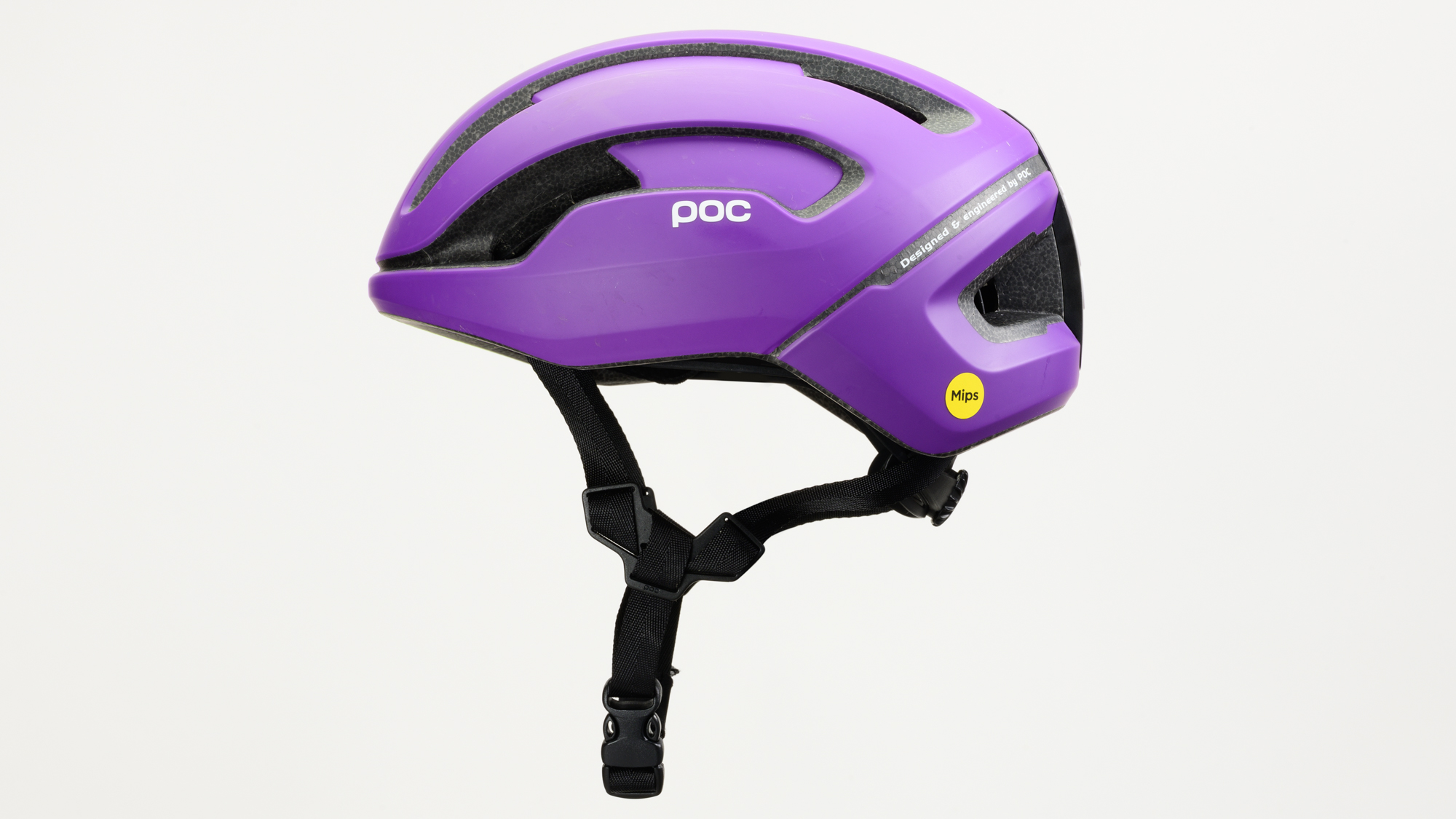
Specifications
Reasons to buy
Reasons to avoid
✅ You ride more upright: The Omne Air is designed for a less stretched ride position.
✅ You usually come up between sizes: POC's size categories are a bit smaller than many brands, so you're less likely to be on the cusp.
❌ You don't like POC's helmet style: POC helmets tend to look large on the head.
❌ You're price conscious: The Omne Air MIPS is quite expensive for a budget helmet.
What does "gravel bike style" even mean? The truth is it's tough to say but POC seems to have cornered the market. If you doubt that, feel free to take a look at the POC Omne Ultra MIPS which specifically calls itself a gravel bike helmet and adds cargo cords and patches. One interesting thing about that helmet though is that it's based on the Omne Air MIPS. The only difference is the Omne Air costs a bit less and lacks the extra add-ons. For a lot of people that's probably a net positive on both fronts.
What really makes the Omne Air MIPS work as a gravel bike helmet is that it has a casual style that lends itself to the more upright position you often find on a gravel bike. That also works for endurance road bikes as well and POC has some very cool colours available. Stylistically you should be able to match a lot of riding.
There's more to the POC Omne MIPS than just style though. For one thing, the cut-off points for the sizes are different from most brands. POC shifts everything down slightly and that will make it easier for some people, like me, to find the right size. If you often find yourself between sizes, this is a great option.
Aside from sizing, you've also got MIPS Integra and excellent sunglasses retention. The MIPS system puts the slip plane into the middle of the pads and it helps keep the helmet feeling plenty airy. Those same big vents make it easy to store sunglasses even without specific grip pads. The only thing I'd love to see changed is less weight but it’s also worth noting that for a budget list, this option is a bit expensive. It’s a budget option in other company though and it is a great helmet so if you can make it work, you won’t be disappointed. It’s also worth looking at prices for all the colours because often you’ll find deals.
For more details about this helmet, take a look at our POC Omne Air SPiN review. The two helmets share everything except for a change to a version of MIPS that is incredibly close to the previous SPiN technology.
Best for ride tracking
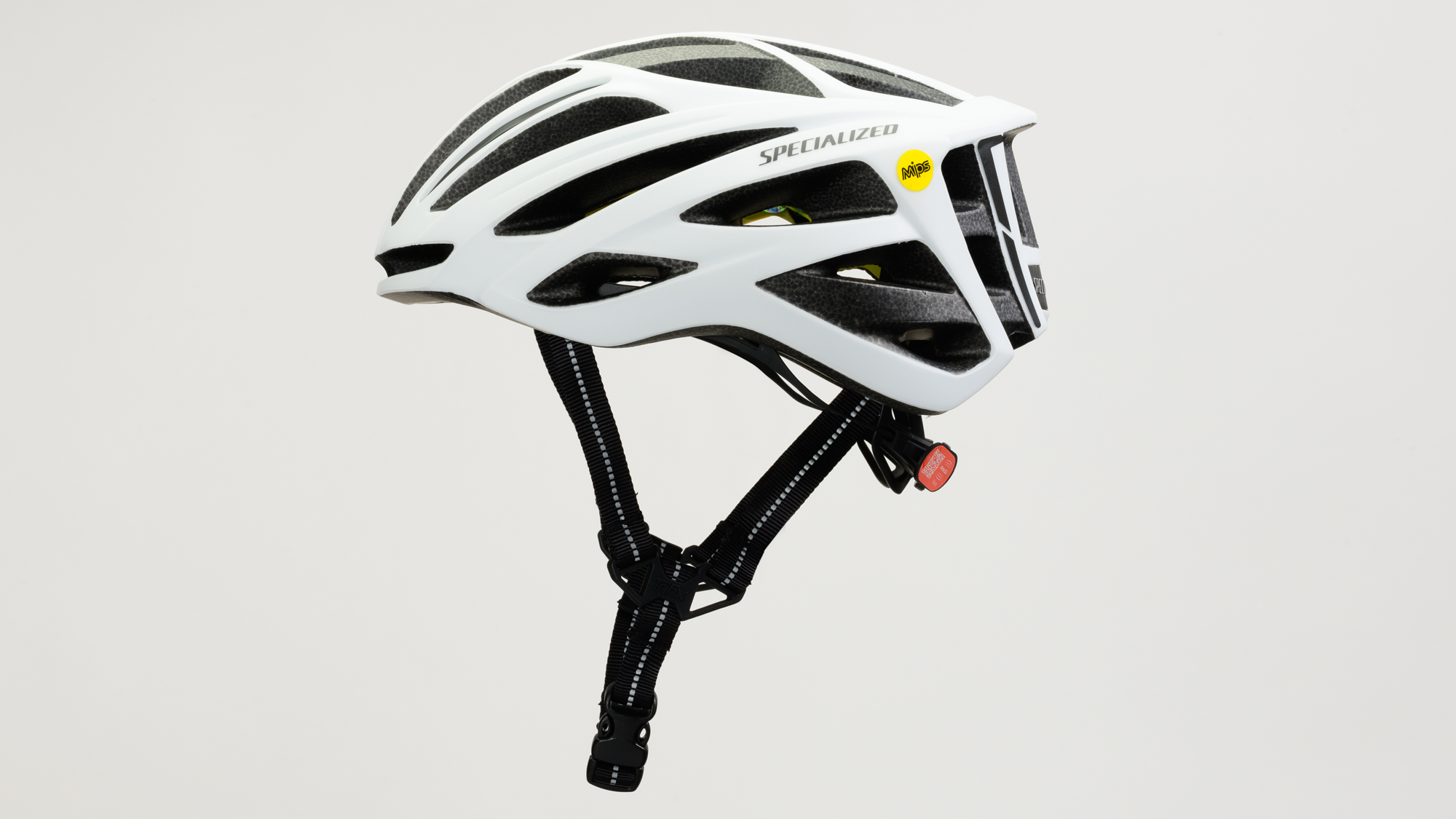
6. Specialized Echelon 2
Specifications
Reasons to buy
Reasons to avoid
✅ You want ride tracking without a computer: Specialized's ANGi sensor can be added to track your ride.
✅ You want a five star rating: The Echelon is one of the few helmets here with a five star Virginia Tech rating.
❌ You don't want to pay extra for ANGi: The ANGi sensor is now an extra-cost add-on.
❌ You don't carry a phone when riding: ANGi needs a smartphone and network connection to show where you are.
If you ride with something from our list of the best bike computers then there are a lot of options for sharing your ride tracking and sending emergency messages. Without a bike computer, that gets a bit more difficult and that's where the Specialized ANGi system comes to the rescue. Specialized helmets with compatibility have a mounting spot for a sensor that connects to your phone. Start the app then when you start a ride and your friends and family will know where you are while riding. If you crash then it will also send out an emergency alert even if you are unable to. It is an added cost but it's less than a bike computer and you don't have to buy it right away.
Even without the ANGi device, you get a great helmet. For one thing, this is one of the few helmets on this list that carry a five-star Virginia Tech test result. It's great to know that even a budget helmet lets you choose something that's scored as high as some of the most expensive helmets on the market. You can also count on a comfortable strap system that is easy to adjust and should you need room for a ponytail, Specialized leaves room in the rear cradle.
If you are shopping with an eye on only five-star Virginia Tech ratings, that means limiting your choices to the Bontrager Circuit WaveCel or Specialized Echelon 2. The Specialized is far more of an airy design and that holds true even with one of the original MIPS lines limiting airflow a little.
Best for colour choice

7. Smith Persist 2 MIPS
Specifications
Reasons to buy
Reasons to avoid
✅ Your sunnies drop out of your helmet vents: Smith's helmet has excellent sunglass retention.
✅ You like colour choice: There are loads of colour options for the Persist 2.
❌ You want the best ventilation: Koroyd tends to reduce airflow through the helmet.
❌ You want MIPS Air: Smith uses an older version of MIPS that's less sleekly implemented.
In some ways the Smith Persist 2 and the Giro Agilis MIPS are similar. The weight is pretty close between the two, though the Smith is a bit heavier, and the MIPS system is very close. Neither uses the latest MIPS Air but they both have a black liner that doesn't block the vents.
The big difference between the two is that Smith adds Zonal Koroyd in addition to MIPS. Koroyd looks a bit like a handful of straws and the idea is that it actually replaces some of the foam to add rotational impact protection right into the helmet itself. There's another interesting effect of the Koroyd though.
The reason the Smith Persist 2 is on this list is that it's so good at retaining glasses if you like to stash them during long climbs. The way Smith accomplishes that is by building a small pocket above the Koroyd. As long as your glasses have straight and narrow, ends to the arms they will slide into the space. It won't work for every situation but if it does, there's no helmet here that's as secure. Even a fast descent on gravel won't vibrate your sunglasses free.
Aside from that feature, you've got a sleek helmet with lots of colour options. There are also four sizes available, rather than the usual three.
Where the straps come together it's exceptionally easy to adjust and get the buckle forward or back under your chin. At the front of the helmet, there are air channels to help get air off your glasses and up to your forehead. The downsides are the older MIPS liner as well as the lack of Virginia Tech testing.
Best for aerodynamics
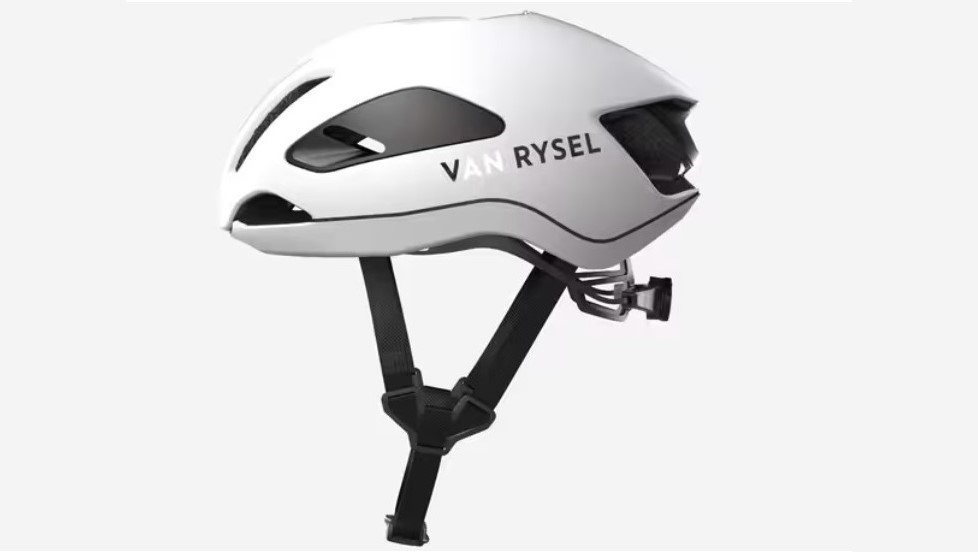
Specifications
Reasons to buy
Reasons to avoid
✅ You want aero on a budget: The FCR beat pricier alternatives in our wind tunnel tests.
✅ You want to choose whether to have MIPS: There are MIPS and non-MIPS options sold.
❌ You want thin straps: The Van Rysel FCR's are thicker than some.
❌ You worry about looks longer-term: We reckon that the Van Rysel lettering could peel off over time.
There are a limited number of aero helmets available, as aero optimisation costs money and brands reserve it for the more expensive options.
The Van Rysel FCR is an exception though, as Decathlon, Van Rysel's parent brand has the volume and marketing clout to offset the development costs. It's also moving aggressively upmarket with its sponsorship of the Decathlon-AG2R pro team - a team which needs an aero road helmet for racing, hence the FCR.
But Van Rysel hasn't put a pro-level price tag on its aero helmet, despite the R&D. We found the Van Rysel FCR helmet was among the best-performing when we took a range of aero road helmets to the wind tunnel, outpacing some significantly pricier, heavily marketed alternatives. Consider where you place your sunnies when not wearing them though, as our testing showed that they can slow you down if they're stuck in the front vents.
There are some nice features too, including the Fidlock magnetic buckle. There's good adjustability from the large rear dial, although the straps are non-adjustable and a bit thicker than those on some other helmets. We also reckon that the wordmark lettering could peel off over time.
The base helmet doesn't include MIPS, although there's a MIPS option available if you spend a little extra cash. Neither has been to Virginia Tech's Helmet Lab yet.
Also Tested
When we put together a buyer's guide we test as many products as possible. The point is not to include every single thing but rather to find the best. Sometimes that means there are excellent products that just didn't quite make the final cut. In this case, there were a number of options that fit that criteria.
Thousand Heritage 2.0
Thousand Helmets makes stylish city helmets that might be a good choice for any kind of casual riding. The updated Heritage 2.0 adds more ventilation and gets a better Virginia Tech score than its predecessor.
Bontrager Starvos WaveCel
A helmet that I did spend time with is the Bontrager Starvos. It's another WaveCel design and there's very little to complain about. In the end, the only reason it didn't make the list is because the Bontrager Circuit is very similar both in price and design while also adding the ability to mount lights when needed. If you like the idea of the Circuit but don't think you'd ever use the magnetic light mounting then the Starvos is worth a look.
Giro Isode MIPS
The Giro Isode MIPS is another helmet that narrowly lost out to a different helmet from the same brand. It's lighter and the style is a bit sleeker but for not much more money you get the option of adding a really good rear light. Once again if you won't use a light then the Isode will save you money compared to the Agilis.
Specialized Align 2 MIPS
The last helmet that almost made it is a great option for those looking to really save money. The Specialized Align II is the least expensive helmet I looked at and it's completely usable. There's MIPS and a five-star Virginia Tech result. This one missed the list because, at 330 grams in a size small, it was the heaviest road bike helmet I looked at, plus the rear cradle isn't adjustable vertically. If it happens to work for you, it's worth considering based on the price.
How to choose the best budget bike helmet for you
When you start your search for the best budget bike helmets you are going to want to start with safety first. That's the whole point of a helmet so it makes sense that you want something safe. Thankfully though, this is a pretty simple part of the buying process.
Every single helmet sold will have had to pass the relevant safety tests for the location where it's available for purchase. In the US, as an example, that means every helmet you find for sale will come with CPSC (consumer product safety commission) certification. That certification will mean that the helmet has passed a series of tests covering peripheral vision, positional stability, dynamic strength of the retention system, and impact attenuation. Basically, it will stay on your head, you'll be able to see, and it will keep your head intact at the energy levels tested. There is more that you might consider but think of this as a minimum level of protection.
Outside of safety, you are going to want to look at comfort and style. Budget helmets will tend to give up some features such as low weight or aerodynamics but you still want a helmet that feels good on your head. You also don't want to neglect style. It might seem silly at first but if you don't like the way your helmet looks, it won't see much use.
How important is a Virginia Tech rating?
Although there will always be government safety testing, Virginia Tech goes further. Certifications from agencies like the CPSC only state that a helmet meets a minimum requirement. They give no indication of how that performance ranks compared to the competition and impact testing only covers a specific range of impacts. Virginia Tech has emerged as the only unbiased organisation to use a standardised and comparable set of tests to rank helmet performance compared to other models. Virginia Tech is also a pioneer in the idea that off-centre impacts are different.
Given that those are all important for evaluating a helmet, we've included the scores when available. If you are looking for a helmet, it's reasonable to consider that score but you might also choose a helmet that doesn't have it. Not every helmet has been through the testing and there are valid reasons for this that might have nothing to do with performance.
A big reason why a company might lack Virginia Tech testing is that not everyone agrees with the methodology. Particularly notable in that realm is Kask, which disputes the validity of the head forms that Virginia Tech uses to test. The brand states: "Most helmet tests use rotational impact prevention technologies with head forms that have a higher coefficient of friction than those of the human skull and therefore may not reflect what occurs in some accidents." Because of that stance, Kask has developed a unique test protocol called WG11 using a different head form; it isn't alone as Rudy Project also uses the WG11 Protocol.
Another reason some helmets might lack Virginia Tech data is the sheer volume of new releases. Helmets come out often and it takes time for the results to show up. Sometimes it's just a matter of time before a number gets posted.
What does the Virginia Tech score mean?
Virginia Tech tests helmets from a wide variety of sports and has been doing so since 2011. No helmet brand is able to pay for better results and there is a standard testing protocol. If you do decide to keep an eye on the testing results of Virginia Tech, you'll need to understand what they mean.
If you want to dive deep, Virginia Tech goes into great detail covering the science behind the number. For the purposes of this guide though, the lower the number the better and right now the top-ranked helmet, out of 188 tested, has a score of 8.4. If you also see a star ranking, that is the same testing displayed in a different way.
Any helmet with a score below 14.00 will have a five-star ranking. In practice, over half of the 240-plus bike helmets across all discipline that have been tested to date achieve this and a fair chunk of the rest are rated four stars.
Do you need MIPS in a budget bike helmet?
MIPS stands for multi-impact protection system and it's a brand name. At this point, it's become synonymous with helmet safety because MIPS was early to identify the need for a slip plane system to reduce head trauma. The brand is the most well-known because of its excellent marketing and smart technology. That doesn't mean though that a helmet has to have MIPS to be safe.
There are a variety of reasons that a good helmet might not have MIPS. For one thing, as already mentioned, not every company agrees with the need for a slip-plane system for safety. There are also other companies that do agree with the need but would rather develop a unique system of their own. Some of the technologies that replace MIPS are WaveCel from Bontrager, Kineticore from Lazer, and Koroyd which Smith uses.
Ultimately it's the results that matter. If a brand is able to make a helmet without MIPS that is safe, there's no reason to insist on the MIPS brand, although it does dominate both the market for slip plane tech and the top end of the Virginia Tech helmet ratings.
What does it take to find a comfortable budget bike helmet?
When it comes to finding a comfortable budget bike helmet, it's all about fit. You could say the same about more expensive helmets as well but it becomes even more important as other features get stripped away. Different brands have different size ranges and different internal shapes; some fit perfectly while others are a struggle.
Start by measuring your head with a fabric measuring tape. You want to place it across your brow and above your ears. If you don't have a soft measuring tape then use a piece of string then compare it to a standard measuring tape. I've even used a long USB cable in a pinch.
With that information in hand, compare the size ranges for the helmets you like. If you are close to the edge you'll have to decide if you'd prefer to have one that's got extra room or if you want to keep it as small as possible. Go big if you like to add a hat under your helmet. Once you get what you think should fit, don't be afraid to send it back if it doesn't fit quite right.
What type of budget bike helmet is best for me?
This is the style section. It's something that people think doesn't matter but ends up being one of the questions I get asked about the most. Style matters and it's important to trust your intuition.
If you feel like a particular helmet doesn't match your bike, there's probably more to it. People tend to have an idea of the type of riding they do and the type of rider they are. Even when someone isn't able to voice exactly what that means they will often have a feeling about how a helmet should look to match that style of riding. You might feel silly wearing an aero helmet on a commuter bike, for example. Find yourself a helmet that feels right to you aesthetically and it's going to match how you see yourself as a rider.
Don't be afraid to use style to pick your helmet. There's no "right" kind of helmet and you want something that makes sense to you.
Do women need women's-specific helmets?
Because some helmet manufacturers offer separate women's-specific helmets, and others do not, there can be confusion. You might be wondering why we don't have something listed for women. We've covered whether women need women's-specific helmets in depth, but if you just want to get right to the point, the answer is no. The main takeaway was that most women tend to prefer unisex helmets and that there's nothing about a woman's head that would require a different helmet shape. All of the helmets in this list are unisex.
How do we test the best budget bike helmets?
There's no right or wrong helmet and there's no objective testing that I can do. As discussed, there's not even a consensus in the industry about what the best way to test helmets is. No one has figured out the magic formula to keep you safe every time. All that means, what I can do is share the information and spend time riding my bike wearing these helmets. Every recommendation on this list is here because I've spent time testing and researching what I think is the best budget bike helmet for you.
Get The Leadout Newsletter
The latest race content, interviews, features, reviews and expert buying guides, direct to your inbox!
Paul has been on two wheels since he was in his teens and he's spent much of the time since writing about bikes and the associated tech. He's a road cyclist at heart but his adventurous curiosity means Paul has been riding gravel since well before it was cool, adapting his cyclo-cross bike to ride all-day off-road epics and putting road kit to the ultimate test along the way. Paul has contributed to Cyclingnews' tech coverage for a few years, helping to maintain the freshness of our buying guides and deals content, as well as writing a number of our voucher code pages.